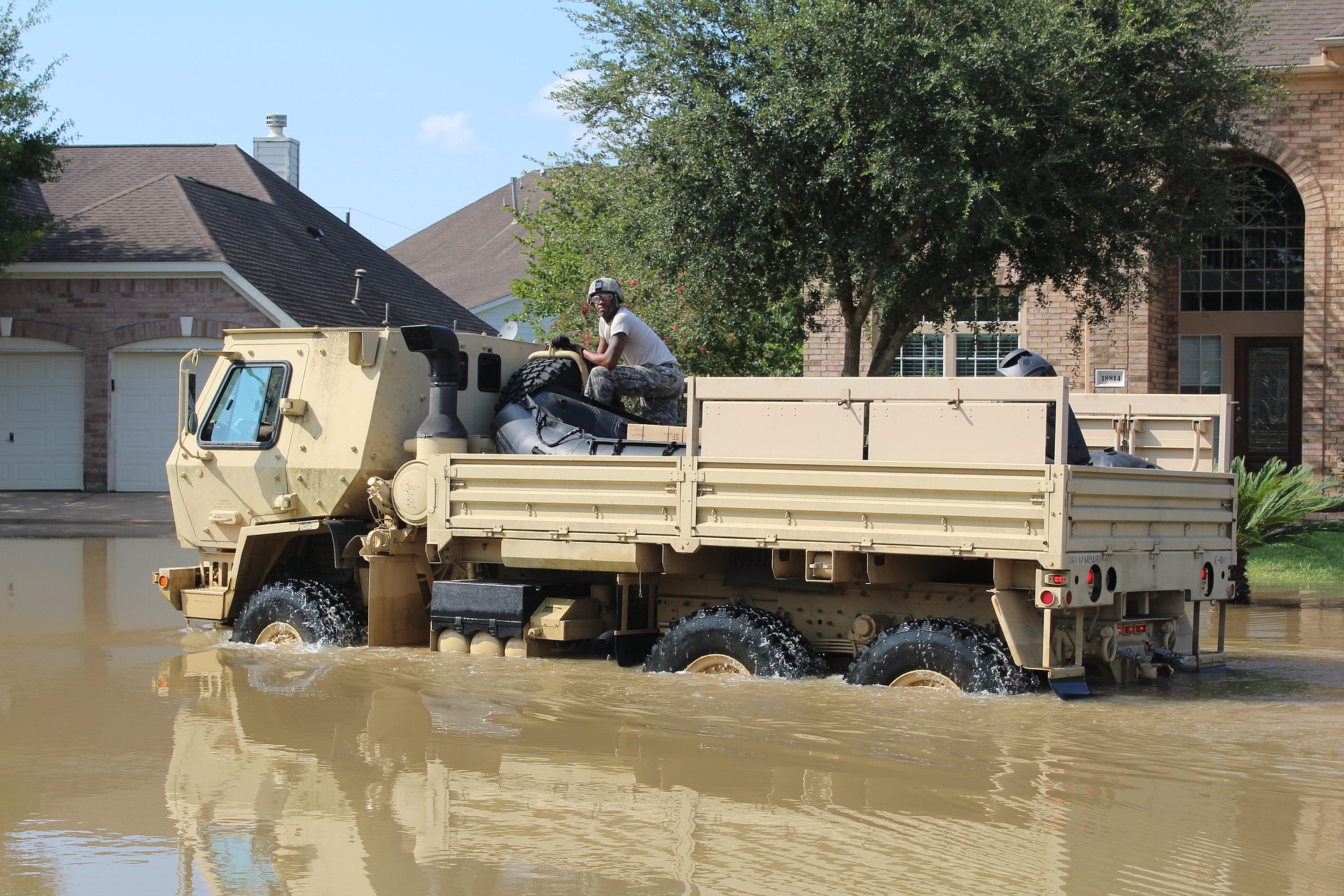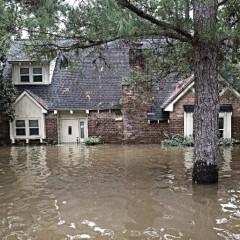First Street data indicates climate abandonment areas of Houston are predominately in less affluent neighborhoods with older infrastructure spread across the city but generally located inside the 610 Loop.
Census blocks are the smallest geographic unit used by the U.S. Census Bureau, which collects data from 100% of houses in an area. There are more than 8.2 million census blocks in the United States, including 111 in Houston.
Nationally, 34% of the population lives in areas prone to floods or other natural disasters. Consequently, residents are leaving these areas, sometimes moving just blocks away, and not being replaced by people looking for new neighborhoods.
“There appears to be clear winners and losers in regard to the impact of flood risk on neighborhood-level population change,” said Jeremy Porter, head of climate implications research at First Street. “The downstream implications of this are massive and impact property values, neighborhood composition and commercial viability both positively and negatively.”
According to the report, Texas leads the nation in costly disasters. Since 1980, it has had $236 billion in tropical storm damage, $40 billon in drought losses, $82 billion in severe storm damage and $25 billion in winter storm damage — more than three times as much as New York, the next closest state for winter storm damage.
While climate change issues may be impacting where people choose to live, there is still a case to be made for staying in climate abandonment areas. Areas that were heavily impacted by Hurricane Harvey in 2017 may still be desirable and retain their populations. While the neighborhoods may flood, they are not in climate abandonment areas.
“I took a quick peek at Zillow,” said James Elliott, chair of the Rice University Department of Sociology, “and what’s the neighborhood with the fastest-growing home value? Friendswood. You look at Bellaire, Meyerland, right? Same thing. So, in some respects, there’s a gentrification happening. It might look like displacement in some of these neighborhoods. But what’s happening is those who can afford to dig in and buy insurance and elevate their homes stick around and invest in these.”
An estimated 2,800 homes flooded in Friendswood during the unprecedented rain brought on by Hurricane Harvey. Meyerland and Bellaire were also heavily impacted.
The median price for houses sold in Friendswood was $352,250 in December while the median price was $864,140 in Bellaire and $456,350 in Meyerland, according to data compiled by Redfin.
But less affluent neighborhoods in Houston are disproportionately impacted by climate change. While schools are upgraded and repaired in some more affluent areas, which helps home values rise and boosts home equity, “that just doesn’t happen for Kashmere Gardens or Trinity Gardens or historically African American neighborhoods or neighborhoods that historically were populated by white working class because of the affordable housing,” Elliott said.
The median price for a home sold in Kashmere Gardens was just $99,000 in December while Trinity Gardens had a median sale price of $223,845.
Data from Redfin.com indicates that homes in Kashmere Gardens have a 90% chance of severe flooding over the next 30 years and Trinity Gardens homes have a 53% chance. Homes in Friendswood (59%), Bellaire (95%) and Meyerland (92%) have similar or worse flood risks.
It is not just climate change creating climate abandonment areas. Ongoing development also negatively impacts many neighborhoods. “With the amount of impervious surface that we build … that creates more runoff that’s put people in increasingly hazardous areas,” Elliott said. “So it’s not just climate change. It’s how we developed in this area for a long time and created a lot of impediments to the rain soaking in and doing what it normally does.”
In the Kinder Institute’s 2023 Houston Area Survey, 80% of respondents supported a ban on building in repeatedly flooded areas.
Climate abandonment areas include the cost of a home based on its location along with the added costs associated with higher rates for homeowners and flood insurance policies. Higher costs often drive some homeowners out of the neighborhood to nearby areas with lower insurance rates due to a lower flood chance.
A third of Harris County land is in a flood plain, but in census blocks that are also climate abandonment areas, purchasing flood insurance may not be a high priority.
According to First Street Foundation, the top 10 counties in the nation with the most climate abandonment areas despite having above-average population growth include Harris County. Three Texas counties rank worse than Harris: Bexar (with 17.1% of blocks in climate abandonment areas), El Paso (12.7%) and Tarrant (9.8%).
“The population exposure over the next 30 years is a serious concern,” said Evelyn Shu, senior research analyst at First Street and lead author on the paper. “For decades we’ve chosen to build and develop in areas that we believed did not have significant risk, but due to the impacts of climate change, those areas are very rapidly beginning to look like areas we’ve avoided in the past.”



